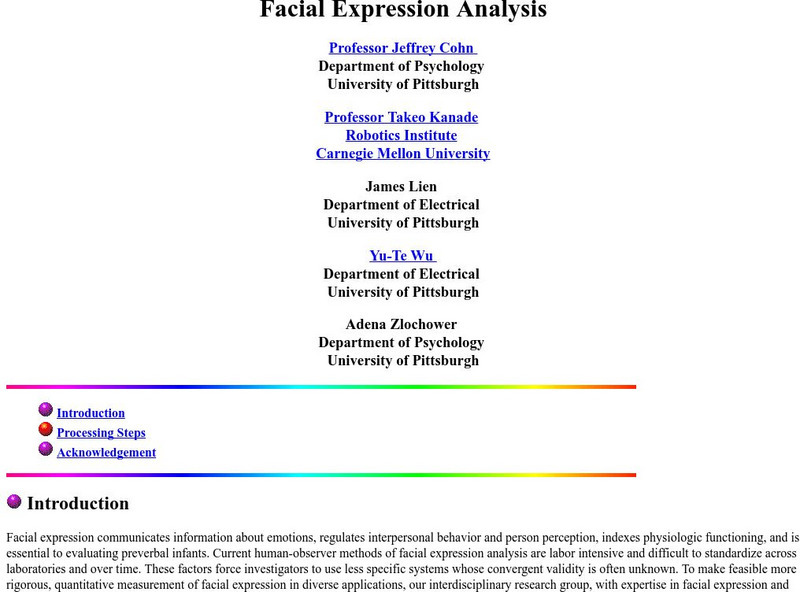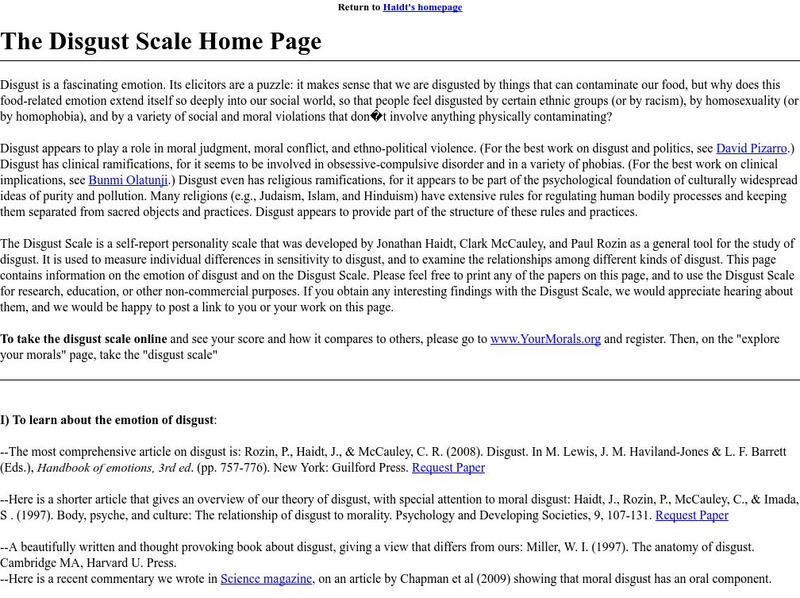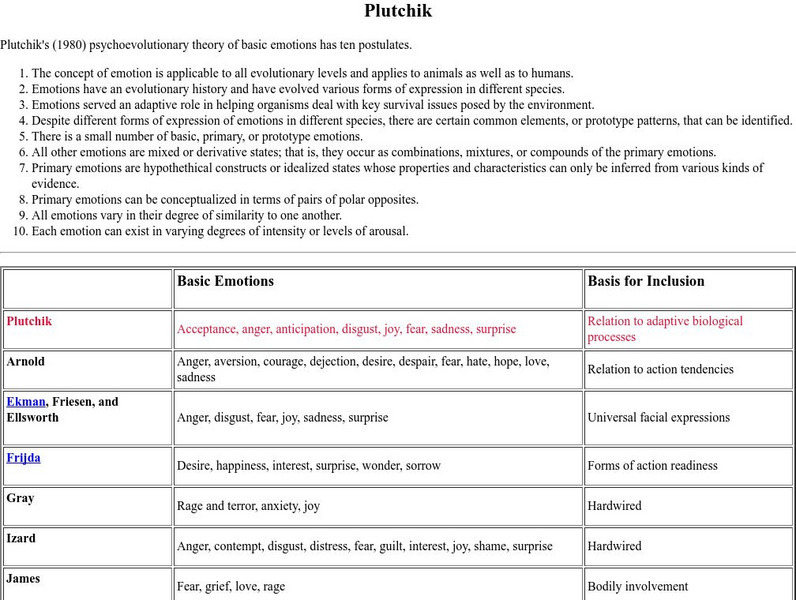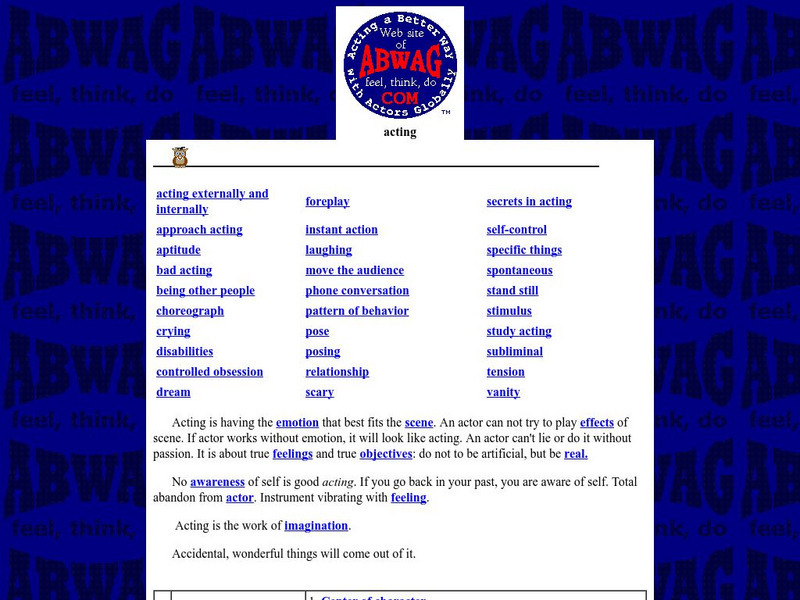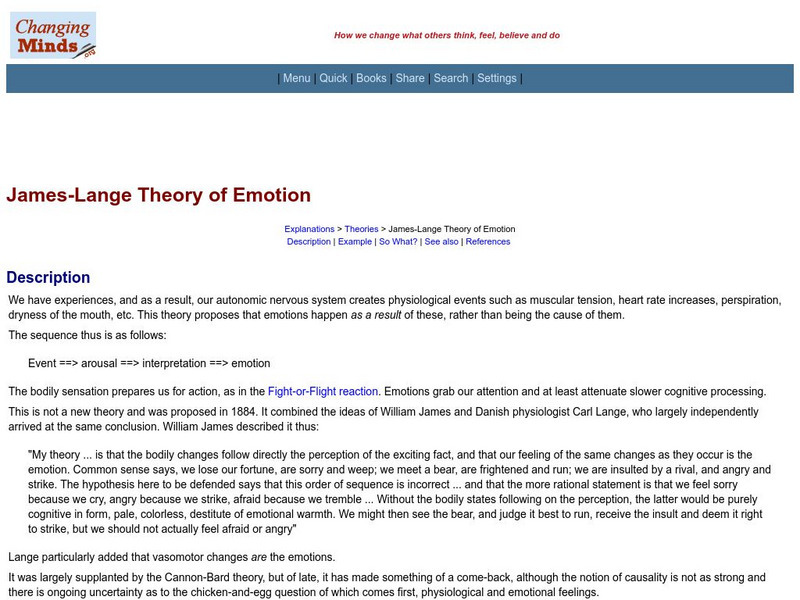PBS
Pbs Kids: Arthur: Games: About Face
Help Arthur to feed his dog by choosing the facial expressions that match the feelings he describes.
Frontiers Media
Frontiers for Young Minds: How Do Emotions Work?
This article from Frontiers for Young Minds explains how emotions work.
Committee for Children
Second Step: Grade 2: Lesson 11: Introducing Emotion Management
For this Second Step lesson, 2nd graders will begin learning about how to manage their emotions.
Committee for Children
Second Step: Grade 1: Lesson 13: Strong Feelings
In this Second Step lesson plan, 1st graders will learn how to recognize their feelings so that they can calm themselves.
Committee for Children
Lesson 12: Identifying Our Own Feelings
In this Second Step instructional activity, 1st graders will learn how to recognize their feelings by identifying physical cues.
Committee for Children
Second Step: Grade 1: Lesson 12: Identifying Our Own Feelings
In this Second Step lesson, 1st graders will learn how to identify feelings by paying attention to physical cues in their bodies.
Committee for Children
Second Step: Grade 1: Lesson 15: Self Talk for Calming Down
For this Second Step lesson, 1st graders will learn how to use "self-talk" to help themselves calm down when they are upset.
Louisiana Department of Education
Louisiana Doe: Curriculum Hub: Ela Guidebooks: Romeo and Juliet: Act I, Scene 1: Prologue
Students listen to lines 106-247 from Act I, scene 1 of Romeo and Juliet using Romeo and Juliet: The Fully Dramatized Audio Edition, to explore what emotion, other than hate, mentioned in the Prologue.
Carnegie Mellon University
Carnegie Mellon: Facial Expression Analysis
Introduces facial expression and the steps to understanding what the expressions mean. Includes pictures and links.
New York University
The Disgust Scale Home Page
Information on the emotion of disgust. Also contains information on the Disgust Scale and has links to more in-depth articles about disgust.
PBS
Pbs: Simple Games That Explore Feelings
Identify and explore a wide range of human emotions and then participate in a classroom parade dramatizing emotions through body movements and facial expressions.
PBS
Pbs: Oops! A Game for Dealing With Embarrassment
Explore feelings of embarrassment and discuss ways to cope with those feelings. Match halves of patterned paper in the shape of pants and hang them on a "clothesline."
Live Wire Media
Good Character: Teaching Guide: Controlling Anger (Spanish)
The Spanish version of a collection of activities and discussion questions to assist young young scholars in learning to control their anger.
Live Wire Media
Good Character: Teaching Guide: Controlling Anger
A collection of activities and discussion questions to assist young students in learning to control their anger.
Harvard University
Harvard University: Games With Words: Emotion Sense
A detailed assessment with thirty questions tests your understanding of different types of emotions and psychological states.
Other
Noteaccess.com: Emotion
This site from Noteaccess.com defines emotion, gives summaries of the main theories of emotions, identifies the eight primary emotions according to Robert Plutchik, and breifly discusses body-language.
Other
Personality Research: Plutchik
This site lists Plutchik's ten postulates for psychoevolutionary theory on emotions, and provides basic emotions and a basis for inclusion for each. Also includes a bibliography.
Other
American Holistic Health Association
The American Holistic Health Association (AHHA) provides information on holistic medicine and promotes its use in standard medical practices.
Other
Abwag: Learn About Acting
Student awareness and appreciation of acting will be enhanced after discovering the tricks of the trade. They will learn how to act, feel and think in an acting environment.
Other
The Institute of Integrative Aromatherapy
The Institute of Integrative Aromatherapy offers a certificate program for people who want to be practitioners in aromatherapy.
Other
Changing minds.org: James Lange Theory of Emotion
An easy-to-read description of the James-Lange Theory of Emotion along with a quote from William James, co-creator of the theory, who describes the theory in his own words.
SMART Technologies
Smart: Show Don't Tell
This lesson provides students with examples of Show, Don't Tell and connected emotions including an emotions and feelings chart. It gives them an opportunity to practice the concept as well.
Curated OER
Carnegie Mellon: Facial Expression Analysis
Introduces facial expression and the steps to understanding what the expressions mean. Includes pictures and links.
Curated OER
Carnegie Mellon: Facial Expression Analysis
Introduces facial expression and the steps to understanding what the expressions mean. Includes pictures and links.




